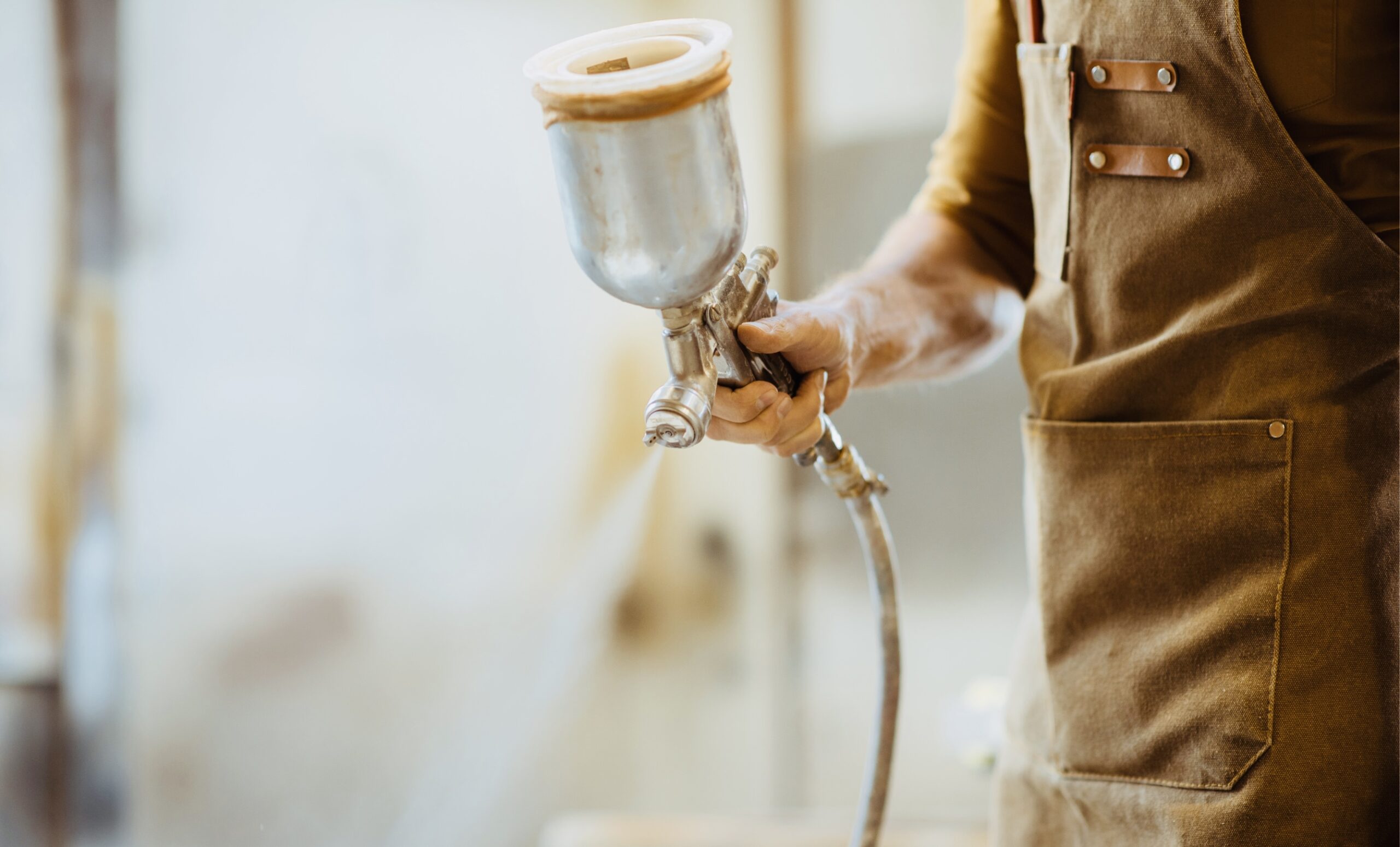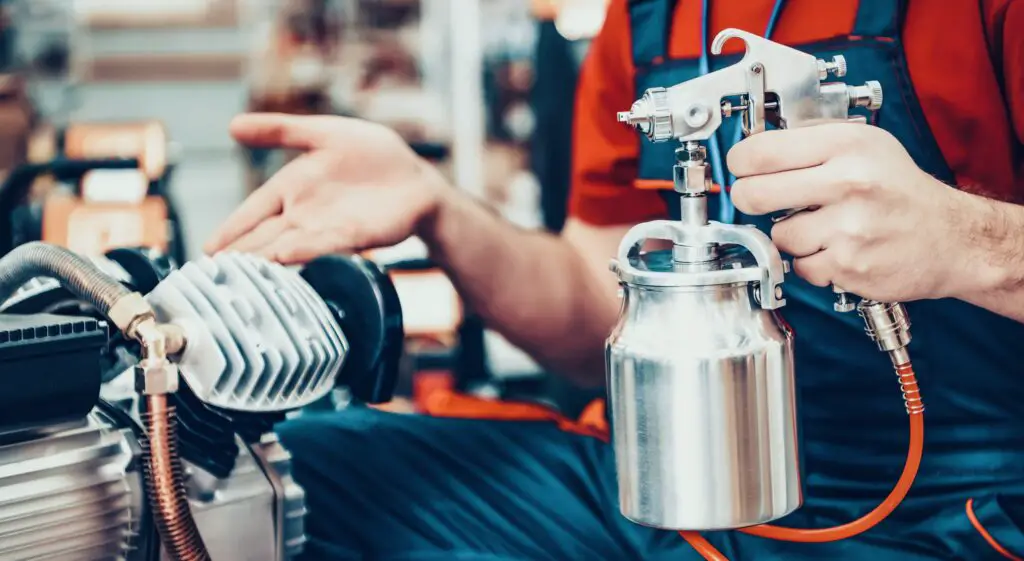Mastering The Art Of : How To Thin Latex Paint For Sprayer Success
A Comprehensive Guide to Achieving a Flawless Finish. Latex paint is a popular choice for all types of painting projects, from refreshing interior walls to adding a fresh coat to outdoor surfaces. When you’re ready with a paint sprayer, you have a powerful tool at your disposal, but ensuring your latex paint is appropriately thinned is the key to achieving that smooth and even finish you desire.
In this comprehensive guide, we will walk you through the steps on how to thin latex paint for a sprayer, providing you with the knowledge and skills to achieve professional-quality results in your painting experiment.
What Is Latex Paint
Before we explore the journey of thinning latex paint, let’s take a moment to understand this versatile paint type. Latex paint, also known as water-based paint, is composed of pigments and binders suspended in water. It is renowned for its quick drying time, low fragrance, and easy clean-up with water.
However, it’s essential to note that not all latex paints are created equal, and some may require thinning for optimal sprayer application.
Things You Need To Remember Before Thinning
The first step in mastering the art of thinning latex paint is understanding whether your specific paint needs thinning.
Here’s how you can assess the consistency of your latex paint:
Read The Label
Begin by carefully reading the label on your paint can. Many paint manufacturers provide specific instructions for thinning their products for sprayer use.
Viscosity Test
To get a feel for your paint’s consistency, dip a clean paint stir stick into the paint and lift it out. Observe how the paint drips off the stick. If it flows smoothly and evenly, your paint may not require thinning.
However, if it’s too thick and drips slowly in clumps, it’s a clear indicator that thinning is needed.
Materials You’ll Need
Before you start the thinning process, gather the necessary materials to ensure a smooth operation:
Latex Paint: The paint you intend to use with the sprayer.
Distilled Water: Go with distilled water over tap water to prevent impurities from affecting your paint.
Measuring Container: A measuring cup or container to ensure precise proportions.
Stir Stick or Paint Paddle: A clean stir stick or paint paddle for adequate mixing.
Viscosity Cup:This tool will allow you to measure the paint’s thickness accurately.
A Step-by-Step Guide: How To Thin Latex Paint For Sprayer
Now, let’s dive into the step-by-step process of thinning latex paint for your sprayer:
Consult The Label
Always begin by checking the label on your paint can for any specific thinning instructions provided by the manufacturer. Follow these instructions if available.
Start With Caution
It’s advisable to commence with a conservative approach when adding water to your paint. Begin by adding small amounts of water, and remember that you can add more if necessary. Over-thinning can be problematic, so it’s best to take it slow.
Measure Your Paint
Pour the desired amount of latex paint into your measuring container. If you need clarification on proportions, a general guideline is to start with a 5-10% water-to-paint ratio by volume.
Gradually Add Water
As you add water to the paint, stir continuously with your stir stick or paint paddle. Thoroughly blend the water and paint to achieve a consistent mixture.
Assess Viscosity
Periodically, perform the viscosity test mentioned earlier to evaluate the consistency of the paint. Ideally, it should flow smoothly without forming clumps. Be patient and add water in small increments until you reach the desired consistency.
Strain The Paint
To prevent potential clogs in your sprayer, strain the thin paint through a mesh strainer or paint filter before pouring it into the sprayer’s reservoir.
Use A Test Spray
Before experimenting with your project, perform a test spray on a scrap surface. This test run ensures that the spray paints evenly and smoothly, allowing you to make any necessary adjustments before tackling the main task.
Common Issues While Experimenting With The Thinning Process
Even with careful preparation and the best intentions, sometimes issues may arise during the painting process.
Let’s explore some common problems and their solutions:
Clogging Of The Nozzle
If your sprayer nozzle becomes clogged during painting, stop immediately. Turn off the sprayer and clear the nozzle. This can happen due to paint particles in the mixture. Regularly inspect and clean the nozzle to prevent this issue.
Unusual Spray Pattern
An unusual spray pattern can result in an inconsistent finish. To understand this, check the sprayer settings, including the spray tip and pressure. Ensure they are adjusted correctly to achieve the desired pattern. Also, maintain a consistent distance from the surface to avoid variations in paint thickness.
Drips And Runs
Drips and runs occur when too much paint is applied in one area. To fix this, sand down the affected area lightly after it has dried, then redcoat with a properly thinned paint mixture. Remember that it’s often better to apply multiple thin coats rather than one thick coat to prevent this issue.
Orange Peel Effect
The “orange peel” texture can occur if the paint is too thick or if the sprayer is held too far from the surface.
To avoid this, adjust the paint consistency by thinning it further if needed. Maintain the correct sprayer-to-surface distance and keep your movements steady for a smoother finish.
Expert Tips for Clean-up & Maintenance: How To Thin Latex Paint For Sprayer
Immediate Clean-up
After completing your painting project, clean the sprayer thoroughly. Run water or an appropriate cleaning solution through the sprayer to remove any residual paint.
Cleaning promptly prevents dried paint from clogging the system.
Disassemble For Deep Cleaning
Periodically, disassemble the sprayer for a deep cleaning. Remove parts like the nozzle, filters, and hoses and clean them individually. This ensures all components are free of paint residue.
Storage
Store your sprayer correctly to extend its lifespan. Please keep it in a cool, dry place and follow the manufacturer’s guidelines for long-term storage. Cover the nozzle and prevent dust or debris from entering.
Regular Maintenance
Regularly inspect and maintain your sprayer. Check for worn or damaged parts and replace them as needed. Lubricate moving components as per the manufacturer’s recommendations to keep the sprayer in optimal condition.
Choosing The Right Latex Paint For Your Project
Choosing the appropriate latex paint is an essential step in achieving a successful paint job with a sprayer. The type of latex paint you choose depends on your project’s specific requirements.
Here are some considerations to help you make an informed decision:
Interior vs Exterior
Latex paints are formulated for either interior or exterior use. Interior paints are designed to withstand wear and tear inside your home, while exterior paints are engineered to endure various weather conditions. Make sure you select the right type for your project to ensure longevity and performance.
Finish Options
Latex paints come in various finishes, including flat, eggshell, satin, semi-gloss, and high-gloss. The finish affects the appearance and durability of the paint.
For example,
Flat finishes are ideal for ceilings and walls, while semi-gloss or high-gloss finishes are often used for trim and doors.
Base Type
Latex paints are available in two primary base types:
- Water-based
- Oil-based (alkyd).
Water-based latex paints are more common and are less fragrant, making them suitable for most projects.
Oil-based paints are known for their durability but require special handling and clean-up.
Primer And Paint In One
Some latex paints are marketed as “primer and paint in one.” These products can save you time and effort by combining the priming and painting steps. However, they may not be suitable for all surfaces, so evaluate your project’s needs carefully.
Specialty Paints
Depending on your project, you might need specialty latex paints. For example, if you’re painting a bathroom or kitchen, consider moisture-resistant or meld-resistant paints. For surfaces like cabinets or furniture, chalk paint or enamel latex paints may be more suitable.
Color Selection
The color you choose can significantly impact the overall aesthetics of your space. Most paint retailers offer color swatches and can mix custom colors. Before finalizing your choice, please test a small sample on your project surface to ensure it meets your expectations.
Environmental Considerations
If you’re concerned about the environmental impact of your paint, look for low-VOC (volatile organic compounds) or zero-VOC latex paints. These paints emit fewer harmful fumes and are better for indoor air quality.
Quality And Brand
While budget considerations are important, investing in high-quality paint from reputable brands can pay off in terms of coverage, durability, and ease of application. Research customer reviews and consult with experts if needed to make an informed choice. By taking these factors into account and selecting the right latex paint for your specific project, you can ensure that your paint sprayer works with the paint seamlessly, leading to a successful and long-lasting finish.
Conclusion
Thinning latex paint for a sprayer is a skill that can be perfect with practice and attention to detail. While the process involves several steps and considerations, it’s essential to understand that achieving a flawless finish goes beyond thinning alone.
Troublesome common issues and following expert tips for clean-up and maintenance play equally vital roles in your painting success.
From this informative writing about How To Thin Latex Paint For Sprayer and by combining the knowledge of proper thinning techniques, meticulous sprayer settings, and the ability to address common problems, you’ll not only achieve professional-quality results but also prolong the life of your paint sprayer.
With these insights and a bit of patience, you’re poised to tackle your painting projects with confidence and produce remarkable, lasting finishes that showcase your skills.

